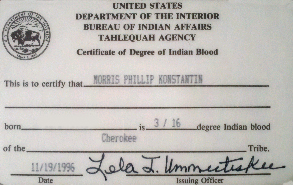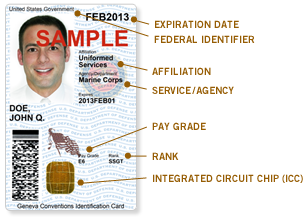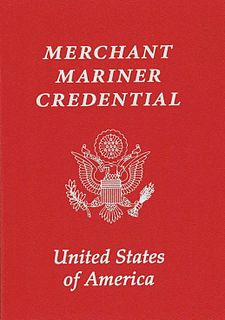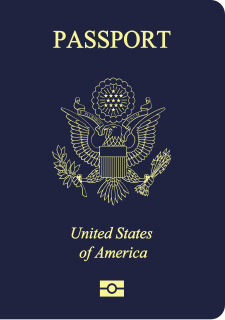 W
WParole, in the immigration laws of the United States, generally refers to official permission to enter and remain temporarily in the United States, under the supervision of the U.S. Department of Homeland Security (DHS), without formal admission, and while remaining an applicant for admission.
 W
WA green card, known officially as a permanent resident card, is an identity document which shows that a person has permanent residency in the United States. Green card holders are formally known as lawful permanent residents (LPRs). As of 2019, there are an estimated 13.9 million green card holders of whom 9.1 million are eligible to become United States citizens. Approximately 65,000 of them serve in the U.S. Armed Forces.
 W
WA Certificate of Degree of Indian Blood or Certificate of Degree of Alaska Native Blood is an official U.S. document that certifies an individual possesses a specific fraction of Native American ancestry of a federally recognized Indian tribe, band, nation, pueblo, village, or community. They are issued by the Bureau of Indian Affairs after the applicant supplies a completed genealogy with supporting legal documents such as birth certificates, showing their descent, through one or both birth parents, from an enrolled Indian or an Indian listed in a base roll such as the Dawes Rolls. Blood degree cannot be obtained through adoptive parents. The blood degree on previously issued CDIBs or on the base rolls in the filer's ancestry are used to determine the filer's blood degree. Information collected for the filing is held confidential by privacy laws, except if the CDIB is related to assigned duties.
 W
WThe Common Access Card, also commonly referred to as the CAC is a smart card about the size of a credit card. It is the standard identification for Active Duty United States Defense personnel, to include the Selected Reserve and National Guard, United States Department of Defense (DoD) civilian employees, United States Coast Guard (USCG) civilian employees and eligible DoD and USCG contractor personnel. It is also the principal card used to enable physical access to buildings and controlled spaces, and it provides access to defense computer networks and systems. It also serves as an identification card under the Geneva Conventions. In combination with a personal identification number, a CAC satisfies the requirement for two-factor authentication: something the user knows combined with something the user has. The CAC also satisfies the requirements for digital signature and data encryption technologies: authentication, integrity and non-repudiation.
 W
WIn the United States, driver's licenses are issued by each individual state, territory, and the District of Columbia rather than by the federal government due to federalism. Drivers are normally required to obtain a license from their state of residence and all states recognize each other's licenses for non-resident age requirements. There are also licenses for motorcycle use. Generally, a minimum age of 16 is required to obtain a drivers/M1 license. A state may also suspend an individual's driving privilege within its borders for traffic violations. Many states share a common system of license classes, with some exceptions, e.g. commercial license classes are standardized by federal regulation at 49 CFR 383. Many driving permits and ID cards display small digits next to each data field. This is required by the American Association of Motor Vehicle Administrators’ design standard and has been adopted by many US states. According to the United States Department of Transportation, as of 2018, there are approximately 227 million licensed drivers in the United States.
 W
WThe Merchant Mariner Credential (MMC) is a credential issued by the United States Coast Guard in accordance with guidelines of the International Convention on Standards of Training, Certification and Watchkeeping for Seafarers (STCW) to United States seafarers in order to show evidence of a mariner's qualifications. It is the standard documentation required for all crew members of U.S. ships for all vessels required to operate with a licensed Master or Operator, regardless of size. The MMC replaced the Merchant Mariner's Document, merchant mariner license, Certificate of Registry, and STCW Certificate.
 W
WNEXUS is a joint Canada Border Services Agency and U.S. Customs and Border Protection-operated Trusted Traveler and expedited border control program designed for pre-approved, low-risk travelers. Members of the program can avoid waits at border entry points by using reserved lanes at land crossings into Canada and the United States, by using self-serve kiosks at airports in Canada, the US and some international locations, or by phoning border officials for a marine entry. A NEXUS membership card is a valid document under the Western Hemisphere Travel Initiative (WHTI), so it can be used in place of a passport, including by air if flying between the US and Canada.
 W
WUnited States passports are passports issued to citizens and nationals of the United States of America. They are issued exclusively by the United States Department of State. Besides passports, limited use passport cards are issued by the same government agency subject to the same requirements. It is unlawful for U.S. citizens and nationals to enter or exit the United States without a valid U.S. passport or Western Hemisphere Travel Initiative-compliant passport-replacement document, though there are many exceptions, waivers are generally granted for U.S. citizens returning without a passport, and the exit requirement is not enforced.
 W
WThe United States passport card is a identity card and a limited travel document issued by the United States federal government in the size of a credit card. Like a U.S. passport book, the passport card is only issued to U.S. nationals exclusively by the U.S. Department of State, compliant to the standards for identity documents set by the REAL ID Act, and can be used as proof of U.S. citizenship and identity. The passport card allows its holders to travel by domestic air flights within the United States, and to travel by land and sea within North America. However, the passport card cannot be used for international air travel.
 W
WThe Real ID Act of 2005, Pub.L. 109–13 (text) (pdf), 119 Stat. 302, enacted May 11, 2005, is an Act of Congress that modifies U.S. federal law pertaining to security, authentication, and issuance procedure standards for drivers' licenses and identity documents, as well as various immigration issues pertaining to terrorism.
 W
WThe Transportation Worker Identification Credential program is a Transportation Security Administration and U.S. Coast Guard initiative in the United States. The TWIC program provides a tamper-resistant biometric credential to maritime workers requiring unescorted access to secure areas of port facilities, outer continental shelf facilities, and vessels regulated under the Maritime Transportation Security Act of 2002, or MTSA, and all U.S. Coast Guard credentialed merchant mariners. As of May 2014, there were 2,999,058 people enrolled in the program. Those seeking unescorted access to secure areas aboard affected vessels, and all Coast Guard credentialed merchant mariners, must obtain a TWIC. The new measures were fully implemented on April 15, 2009. To obtain a TWIC, an individual must provide biographic and biometric information such as fingerprints, sit for a digital photograph and successfully pass a security threat assessment conducted by TSA.
 W
WThe Re-entry Permit is a travel document similar to a certificate of identity, issued by the United States Citizenship and Immigration Services to U.S. lawful permanent residents to allow them to travel abroad and return to the United States. It is a passport-like booklet with a blue-green cover with the words "TRAVEL DOCUMENT" on the front. Individuals whose application for permanent residency has not yet been approved can instead apply for advance parole.
 W
WA United States Uniformed Services Privilege and Identification Card is an identity document issued by the United States Department of Defense to identify a person as a member of the Armed Forces or a member's dependent, such as a child or spouse.
 W
WThe Veteran Health Identification Card (VHIC) is an identification card issued by the United States Department of Veterans Affairs (VA) for eligible veterans to receive medical care at VA Medical Facilities. The VHIC protects the privacy of veterans' sensitive information, as it no longer displays the Social Security number or date of birth on the front of the card. The VHIC will only display the veteran's name, picture, and special eligibility indicators—Service Connected, Purple Heart and former POW, if applicable, on the front of the card. Only veterans who are eligible for VA medical benefits will receive the card. Starting on Jan. 1, 2020, the Purple Heart and Disabled Veterans Equal Access Act allows Purple Heart recipients, former prisoners of war and veterans with service-connected disabilities entry onto military installations to use the AAFES Exchange; commissary and Morale, Welfare and Recreation facilities.
 W
WThe Veterans Identification Card (VIC) is an identification card issued by the U.S. Department of Veterans Affairs (VA) to former military personnel as part of the Veterans Identification Card Act of 2015. The VIC allows veterans to demonstrate proof of service without the need for carrying their DD214, namely for discounts on goods and services offered by private individuals or organizations to veterans.